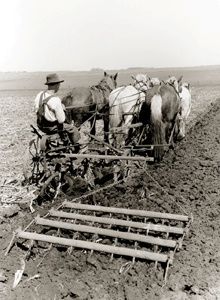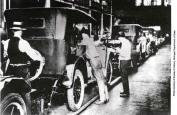Why All This Paperwork?? 1 Before the Laws
 When you're the one who has to lead a quality compliance effort, sometimes it's best to start with a current headline and then ask, "How did this happen? Aren't there supposed to be laws protecting us from poisons in the products we buy?"
When you're the one who has to lead a quality compliance effort, sometimes it's best to start with a current headline and then ask, "How did this happen? Aren't there supposed to be laws protecting us from poisons in the products we buy?"
We, as taxpayers, are paying a lot of money for government agencies to insure that the food, drugs, and medical devices that we use are safe and effective. It also takes a significant effort on the part of companies to comply with the regulations that those agencies enforce. It's reasonable to ask, "Are we getting our money's worth?"
And might we also ask, “Do we need these laws in the first place? Couldn’t the market decide which products should be sold?”
To begin to answer that question let's look back to a time when we didn't have those regulations. This is a story of the collision of technological progress, tragedy, and politics.
The Good Old Days
Until the turn of the last century the only regulation was "Let the buyer beware". Amazingly enough, to some extent it worked. The reason is that life in those days was completely different than today.
About half of all Americans were farmers. They generally made and consumed their own food or bought it from local producers. Another major difference was that consumers generally could tell whether or not the products they were going buy were any good.
 Take this harrow, for instance. When the farmer picked it out there is a good chance that that he would be able to distinguish a good from a bad harrow based on his experience in the business. And even if the farmer were to pick a bad harrow, the impact would be limited because farmers can fix most anything.
Take this harrow, for instance. When the farmer picked it out there is a good chance that that he would be able to distinguish a good from a bad harrow based on his experience in the business. And even if the farmer were to pick a bad harrow, the impact would be limited because farmers can fix most anything.
Similarly, if the farmer were feeding his family by putting meat on the table, the risk was small and again the impact was limited. The farmer might slaughter one of his own animals for the family.
In this case his experience would tell him whether the meat was any good. Or he might buy it from a local butcher shop in the village. In either case the impact of potentially bad meat was limited, because only the farmer's family would have been affected.
If a village butcher shop were to sell bad meat, the people of the local village could do something about it. They had a recourse. Nothing happened in those small villages without everyone finding out about it. Any butcher who sold bad meat would soon be out of business.
The Transition to Industrialized Society
But while the pace of rural life was slow, massive changes were under way. Railroads had decreased the time and the price of transportation by orders of magnitude. It was now possible to ship bulk commodities across the continent in days rather than months. Factories grew larger to fill the demand of a whole nation rather than the surrounding county.
Industrialization provided employment for enormous numbers of workers who flooded into the cities by the millions. As businesses learned how to use economies of scale, costs dropped dramatically.
Consumers now had access to manufactured goods at prices that were undreamed of in the past. But along with great benefits industrialization produced some unanticipated consequences.
The economies of scale were enabled by innovations such as the moving assembly line. These innovations revolutionized the way work was done. Instead of one person doing everything as was done on the farm, individual workers became specialized, doing the same thing over and over again. In doing so they became separated from the production of many of the goods they consumed.
 If the assembly line worker shown here were to decide to buy meat for his family's table, he would have little knowledge of its origin or of its quality. Instead of buying it from a local butcher shop it would have been slaughtered and cut up in huge slaughter houses hundreds of miles away. If the meat was bad, now instead of affecting one family, it could impact thousands.
If the assembly line worker shown here were to decide to buy meat for his family's table, he would have little knowledge of its origin or of its quality. Instead of buying it from a local butcher shop it would have been slaughtered and cut up in huge slaughter houses hundreds of miles away. If the meat was bad, now instead of affecting one family, it could impact thousands.
And what recourse would the worker have if the meat was bad? The meat came from a large company thousands of miles away. The producers and the consumers would never lay eyes on each other.
By the way, do you know the origin of the automobile assembly line? When Henry Ford was trying to figure out how to make more Model Ts he asked his engineers to find inspiration wherever they could. They visited the most efficient industry in the country, the meat packing industry. There they found that the slaughter house managers had solved their cost and quantity problems in a most unusual way.
Next time, They Called it “Smoked Sausage”.

Add new comment